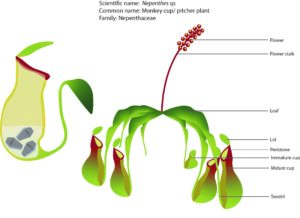Tobacco Company working on potential COVID-19 vaccine
01 April 2020 Potential vaccine in development for COVID-19 using new, fast-growing tobacco plant technology – pre-clinical testing under way Tobacco plants offer the potential for faster and safer vaccine development compared to conventional methods Potential to manufacture 1-3 million doses of vaccine per week BAT’s US bio-tech subsidiary, Kentucky BioProcessing (KBP), is developing a potential vaccine for COVID-19 and is now in pre-clinical testing. If testing goes well, BAT is hopeful that, with the […]
Read MoreUSDA SECURE Rule Paves Way for Agricultural Innovation
(Washington, D.C., May 14, 2020) U.S. Secretary of Agriculture Sonny Perdue today announced a final rule updating and modernizing the U.S. Department of Agriculture’s (USDA) biotechnology regulations under the Plant Protection Act. The Sustainable, Ecological, Consistent, Uniform, Responsible, Efficient (SECURE) rule will bring USDA’s plant biotechnology regulations into the 21st century by removing duplicative and antiquated processes in order to facilitate the development and availability of these technologies through a transparent, consistent, science-based, and risk-proportionate regulatory […]
Read More
Drosera, not the morning dew but sundew
Sundews (Drosera sp.) are probably the most diverse genus of carnivorous plants in the world which consisting of around two hundred species. Commonly known as sundew because the word, Drosera in Greek means dewy. The “dew” found on the hair of sundew exhibit mini-rainbows whenever they are struck by sunlight. They can be found in Canada, Alaska, Siberia, Europe, Nother America, Brazil, Queensland, southernmost regions of New Zealand, and South America. It occurs on almost […]
Read More
Pinguicula – the flypaper
Pinguicula sp. under the family of Lentibulariaceae, commonly known as butterwort, and means the little greasy one in Latin. It consists of about 50 species. It is greasy due to the slimy, sticky, and greasy touch of the leaves. “Ping” is not sticking to the common impression of carnivorous plants. They do not have the capability of killing large insects or small mammals with specialized and colorful leaves that differentiated into sophisticated traps. Pinguicula is […]
Read More
Aloe you vera much
Aloe vera is one of the few plants that share the same scientific and common name. It is a flowering plant that originates from Northern Africa under the family of Aloaceae, which was previously placed under the lily family (Liliaceae). Aloe vera is a xerophyte, a plant that can grow in arid conditions and can withstand long periods of drought. This adaptation includes waxy leaves, the ability to store water, leaves reduced to spines to […]
Read More
Nepenthes – not your “cup” of tea
If you think about a cup in nature, what comes to your mind? The monkey cup is a good call, as a carnivorous plant, scientifically referred to as Nepenthes sp., it is unique because of its modified cup-shaped leaf that looks like a small vase with a lid. Some people use the cup as a container to cook sticky rice added with coconut. Travelers often use older pitchers as water scoops or to catch rainwater. […]
Read More
Venus flytrap – don’t fall into the “trap”!
Venus flytrap (Dionaea muscipula) is the most exciting and popular among all carnivorous plants as it has modified leaves as snap traps. It is under the family of Droseraceae and the only species in its genus. Venus flytraps are native only to the coastal plain of southeastern North Carolina and extreme northeastern South Carolina. It can be found the area with unfavorable conditions such as peaty and acidic soil mostly low nutrient availability in damp […]
Read MorePhotosynthesis Explained
View, browse, and/or download material for educational and temporary copying purposes only.
Read More